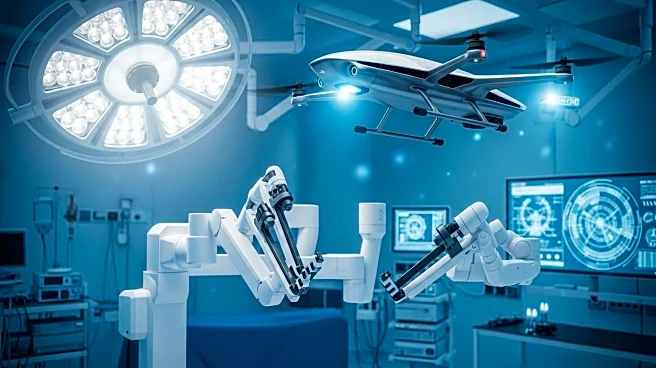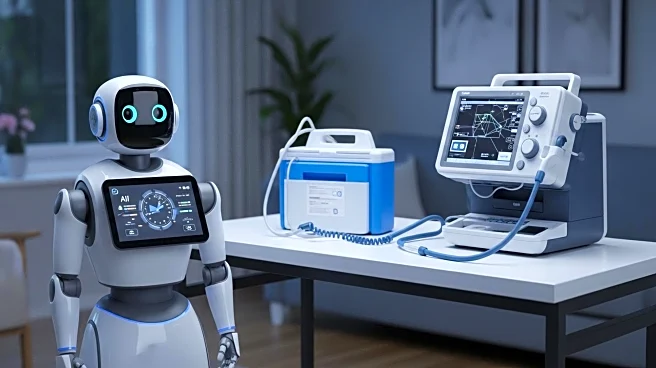What is the story about?
What's Happening?
Recent advancements in computational pathology have been marked by the benchmarking of 19 foundation models and 14 ensembles, which were evaluated on 31 weakly supervised prediction tasks. These tasks spanned morphology, biomarkers, and prognostication, utilizing data from 13 cohorts and four cancer types. The study highlighted the superior performance of models like CONCH and Virchow2, which achieved the highest average AUROC scores across various tasks. The research emphasized the models' ability to learn from large datasets, reducing the need for manual annotation, and demonstrated their effectiveness in clinical pathology tasks.
Why It's Important?
The development and benchmarking of foundation models in computational pathology represent a significant leap forward in medical diagnostics. These models can potentially transform how pathologists interpret histology slides, leading to more accurate and efficient diagnoses. By reducing the reliance on extensive labeled datasets, these models can expedite the analysis of rare molecular events, which is crucial for personalized medicine. The improved prediction accuracy of these models can enhance patient outcomes by enabling more precise treatment plans, thereby benefiting healthcare providers and patients alike.
What's Next?
The study suggests that further integration of these foundation models into clinical practice could revolutionize pathology workflows. Future research may focus on refining these models to handle even more complex tasks and expanding their application to other areas of medicine. Additionally, the potential for ensemble approaches to further improve prediction accuracy indicates a promising direction for ongoing development. Stakeholders in the healthcare industry, including hospitals and research institutions, may look to adopt these technologies to stay at the forefront of medical innovation.
Beyond the Headlines
The ethical implications of deploying AI in pathology include ensuring data privacy and addressing potential biases in model training. As these models become more prevalent, regulatory frameworks may need to evolve to ensure their safe and equitable use. The cultural shift towards AI-driven diagnostics also raises questions about the future role of human pathologists and the need for ongoing education and adaptation in the medical field.
AI Generated Content
Do you find this article useful?













